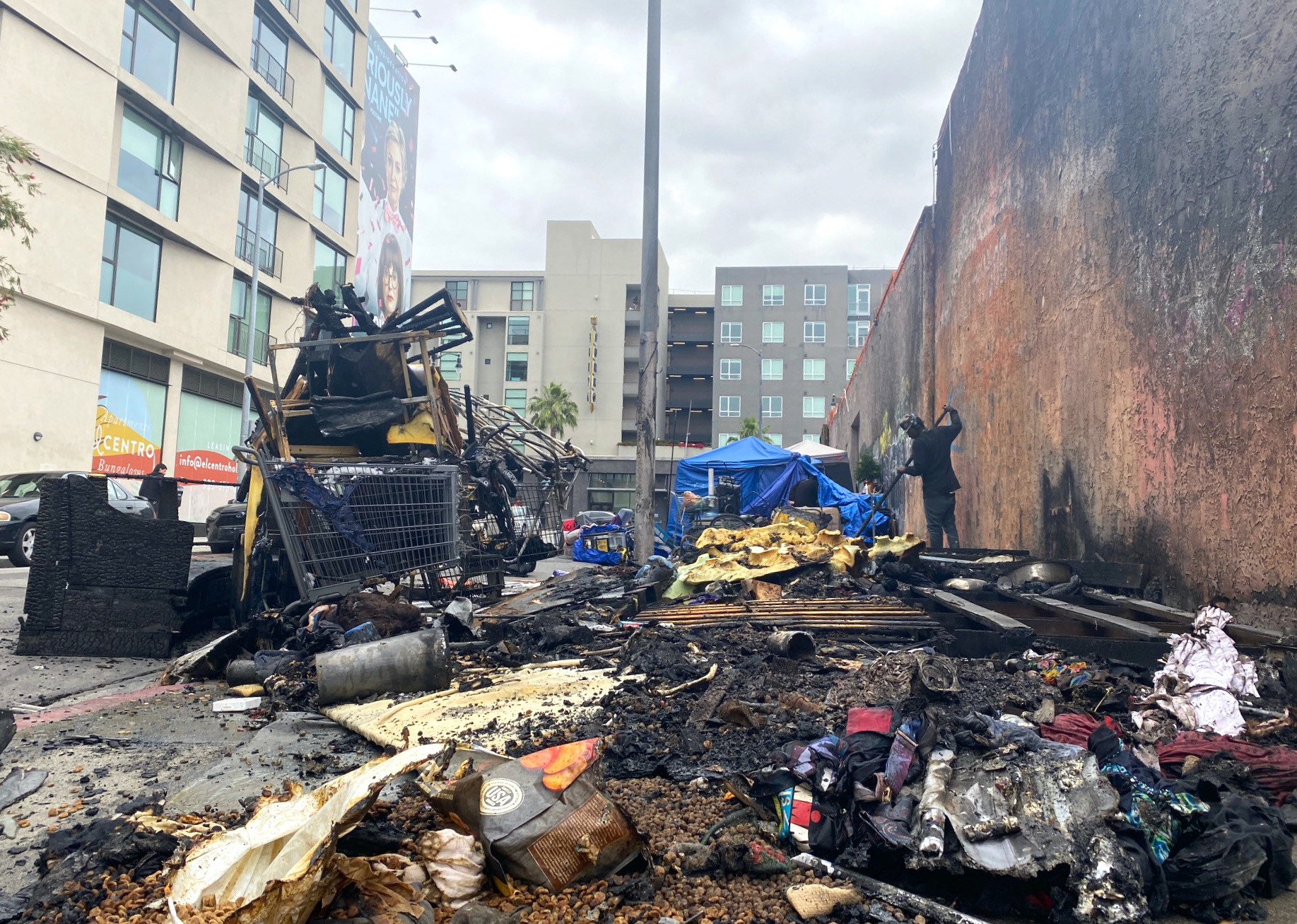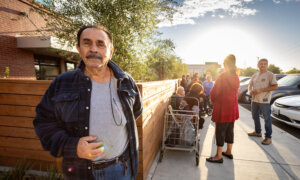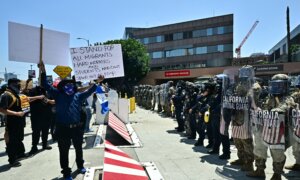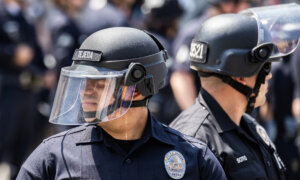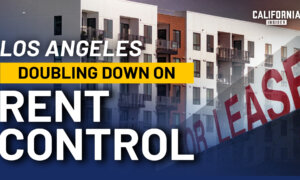LOS ANGELES—It started with one street in Hollywood. A retiree began chatting with a neighbor who was picking up trash and volunteered to help.
Keith Johnson had spent years as a high school photography teacher. Now, looking around at what he saw as a humanitarian catastrophe unfolding in front of him, he thought the homeless crisis wasn’t being accurately reflected in media coverage—or official responses coming from City Hall.
So he began taking photos and asking questions.
“There was a big encampment at Hollywood Boulevard and El Centro. It was there for the longest time. That was kind of one of the first encampments I started on,” Mr. Johnson told The Epoch Times. “And by starting on, I mean, I was just taking pictures and posting on NextDoor, just getting a conversation going, figuring out, ‘What the heck are we gonna do?’”
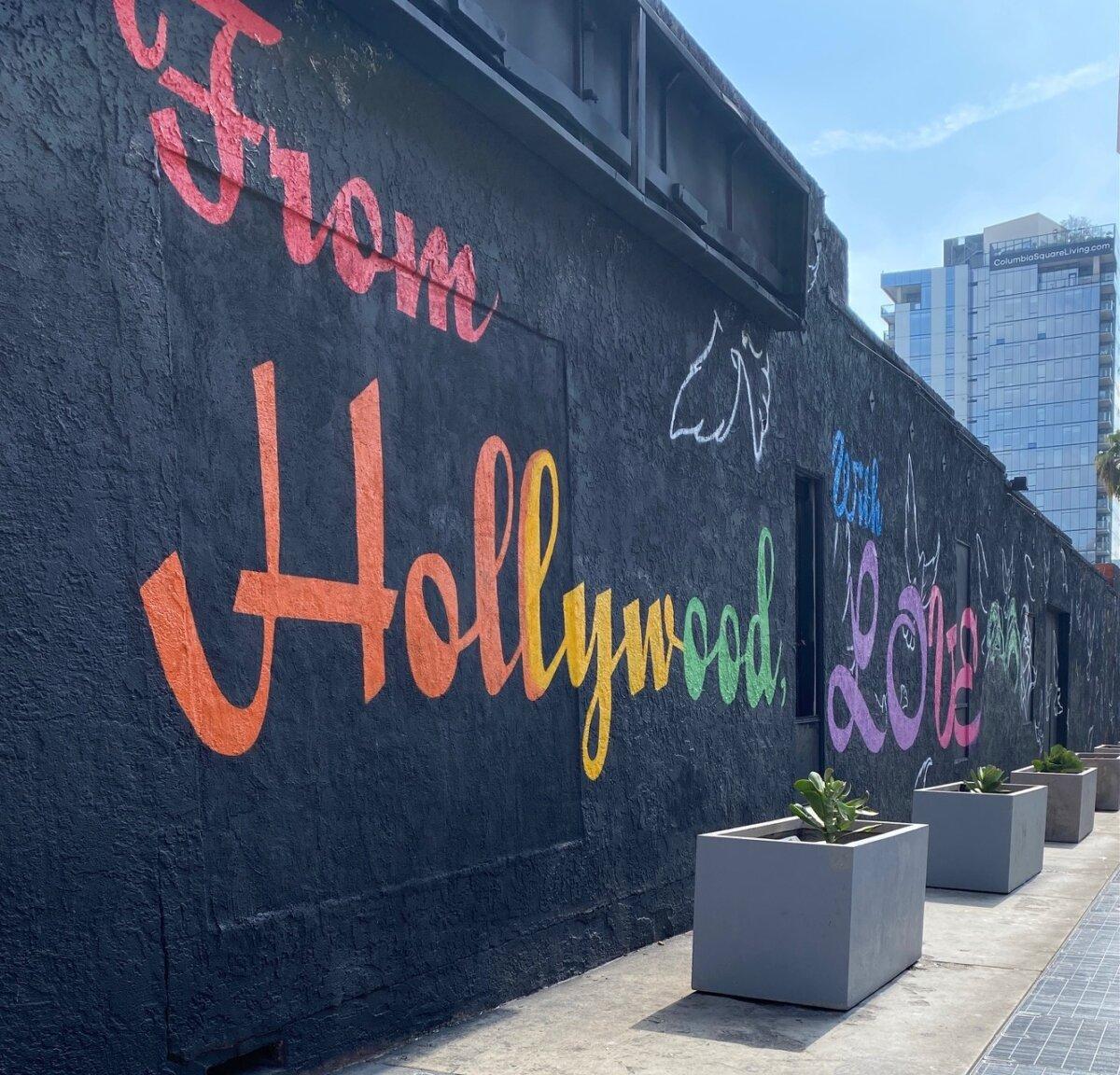
Planters and a mural decorate a former homeless camp area on El Centro Avenue in the Hollywood neighborhood of Los Angeles after cleanup. (Courtesy of Keith Johnson)
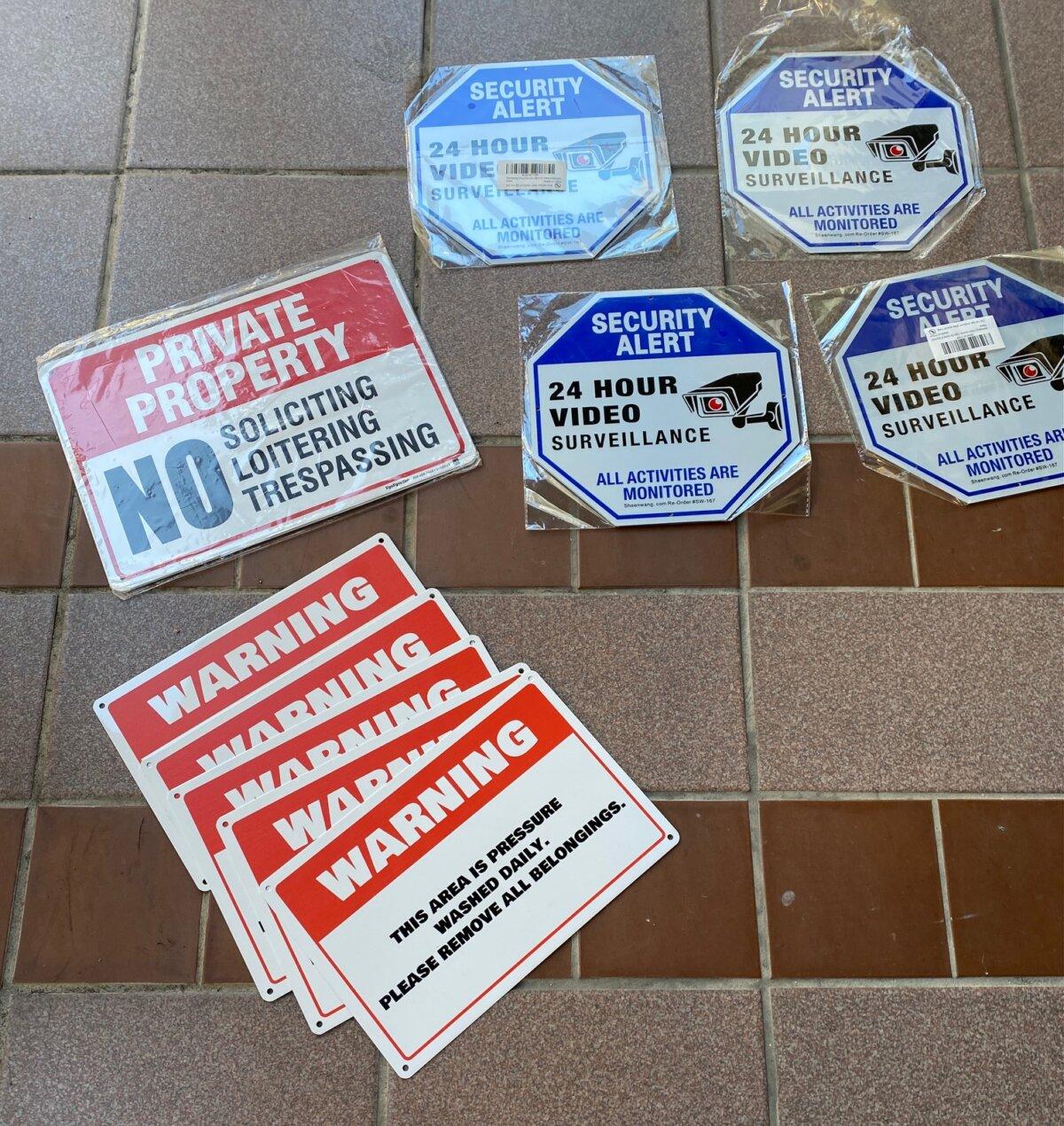
Signs printed by residents to deter homeless encampments. (Courtesy of Keith Johnson)
His activity on the social media platform—where neighbors post about everything from rooms for rent and pet adoptions to catalytic converter thefts and homeless encampments—eventually landed him a public radio show on KPFK, where he and a co-host mostly focus on policy issues related to Los Angeles’s homeless crisis.
He and a few others have also formed a group called SAVE LA, which now has about 18 members. They began comparing notes and trying to engage with city officials.
They have inserted themselves into the official conversation about homeless policy, serving as both collaborator and gadfly to City Hall.
And in many respects, they know their communities better than council field representatives or city workers do. They know local drug dealers on a first-name basis, which street lights are out due to encampment wire hacking, or when the same people return to an encampment after it has been cleared. Some even have a direct line to housing authorities.
Some of their tactics are controversial, such as printing signs so police will enforce anti-camping ordinances—against the direction of some city councilmembers—or putting up “deterrence” planters to prevent encampments from repopulating.
But they also volunteer or hire private contractors to haul away trash and act as a liaison with authorities to help people find housing.
“We’re having to scramble on our own, figuring out ways to work around this mess we’re in,” said Mr. Johnson, who regularly expresses a mix of bewilderment and polite but pressing criticism.
April Silverman, who lives in the upscale neighborhood of Hancock Park in the city’s Fifth Council District—also home to the Mayor’s Mansion—admitted that the situation there is not nearly as bad as Hollywood. But as encampments sprung up, she was frustrated by what she said is a lack of clear policy and community engagement from local leaders.
“There’s no regulation. There’s nothing, there’s no plan in place here,” Ms. Silverman told The Epoch Times. “I could technically go pitch a tent in front of Karen Bass’s house—like, would that be ok? So I was super frustrated, and ... I learned to read between the lines.”
Ms. Silverman began installing “deterrence” landscaping and “beautification” elements after the city would conduct sanitation sweeps of encampments. She paid for fences and planters that she hoped would keep the sidewalks clear.
Technically, she said, the city can get rid of the planters if it wants to, but it doesn’t.
“The city doesn’t do anything they’re supposed to do,” Ms. Silverman said. “You can really rely on their inaction.”
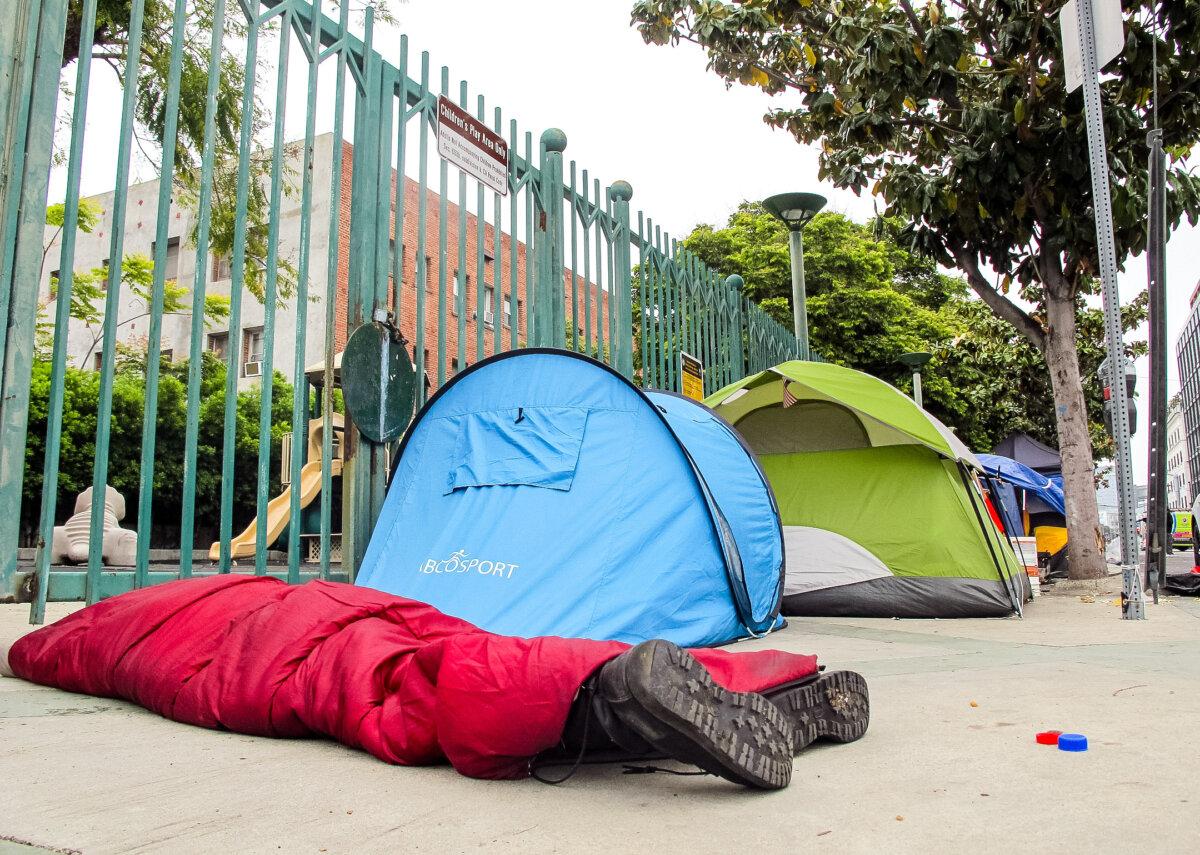
A homeless encampment next to a park playground on Selma Avenue in Los Angeles. (Courtesy of Keith Johnson)
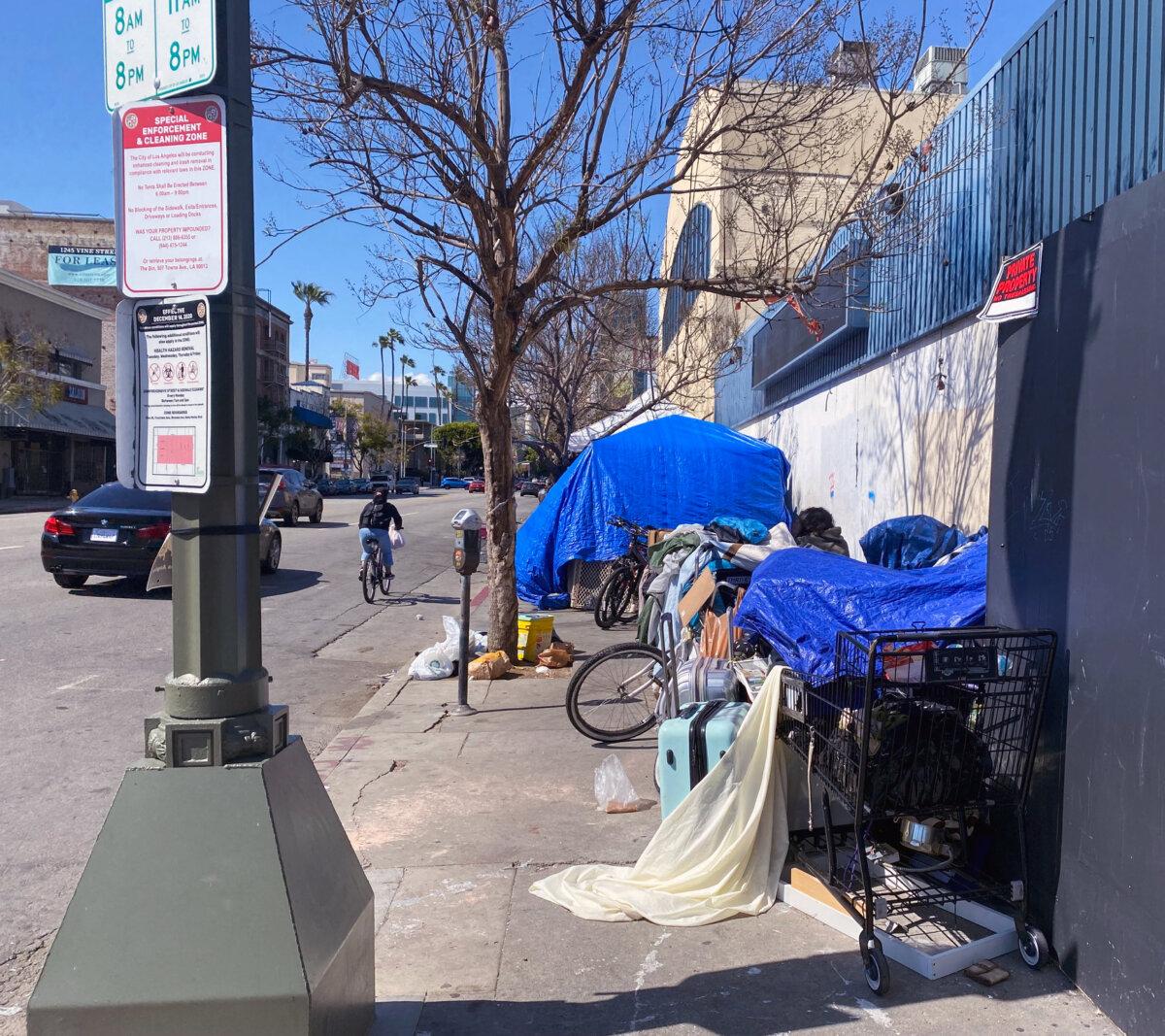
A homeless encampment in Los Angeles. (Courtesy of Keith Johnson)
Lately, she has been trying to get officials to clean up Pan Pacific Park, adjacent to The Grove, where she says homeless encampments and crime have made the public green space “unlivable” for local children and families.
Ms. Silverman said she was just venting at first.
“I was just figuring out, how am I doing this? Why is the city not helping? I thought for sure there’s a plan here. You know, it was the blind leading the blind,” she said.
Ms. Silverman said others explained how complicated the process is, “and we started connecting.”
“So now there are a few of us that have been doing this on our own,” she said.
Selective Enforcement
SAVE LA members say media attention, more than frequent drug busts or criminal activity at encampments, is one of the only things that will elicit a response from the city.
“If there is news coverage, it is pretty effective right away, something gets done,” Ms. Silverman said. “Whereas, if not, they don’t do anything.”
The official name for the city’s sanitation sweeps is “CARE+,” which frustrated residents have taken to calling “room service” for encampments. Crews post notices for the homeless to clear the area for a window of time while they clean, but people are free to return afterward.
Mr. Johnson recalled a large encampment that had been set on fire and cleaned several times but always came back—a pattern he said is frequently repeated.
“Then there was an important event that came up, and all of a sudden, Inside Safe magically appeared and scooped them up and put them into housing,” he said, referring to the mayor’s program that clears encampments and places people in converted motels.
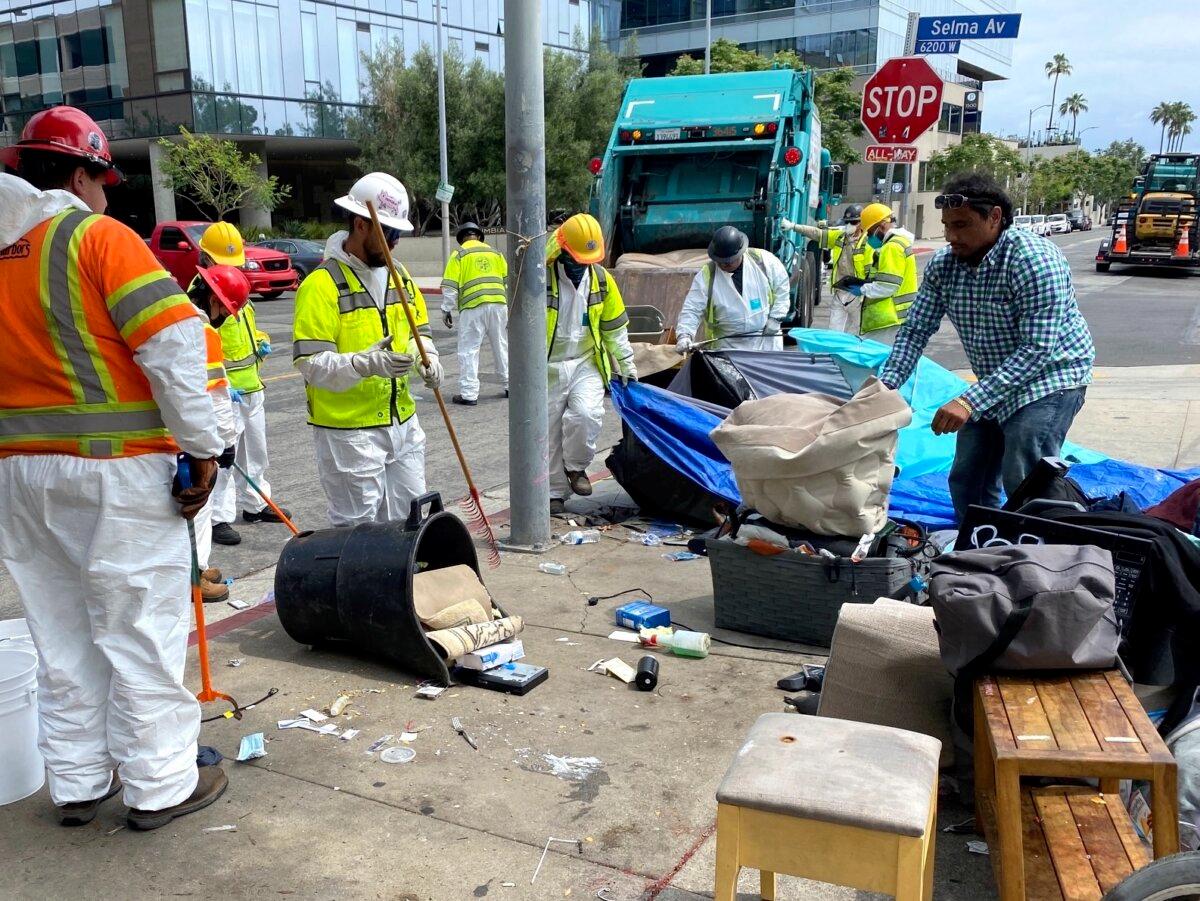
Inside Safe crews clean up a homeless encampment on El Centro Avenue. (Courtesy of Keith Johnson)
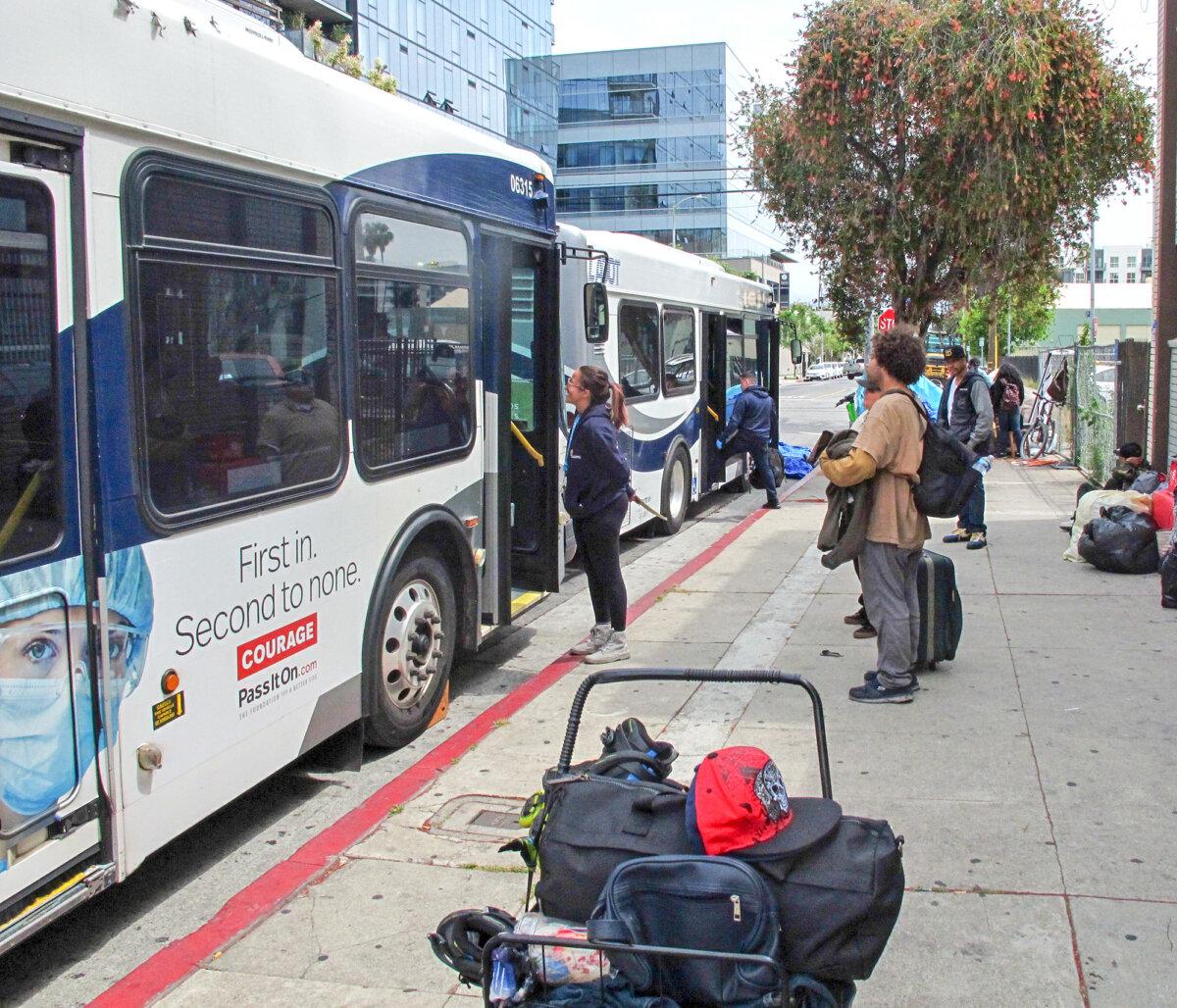
Homeless people get on a bus to go to a hotel as part of the Inside Safe program in Los Angeles. (Courtesy of Keith Johnson)
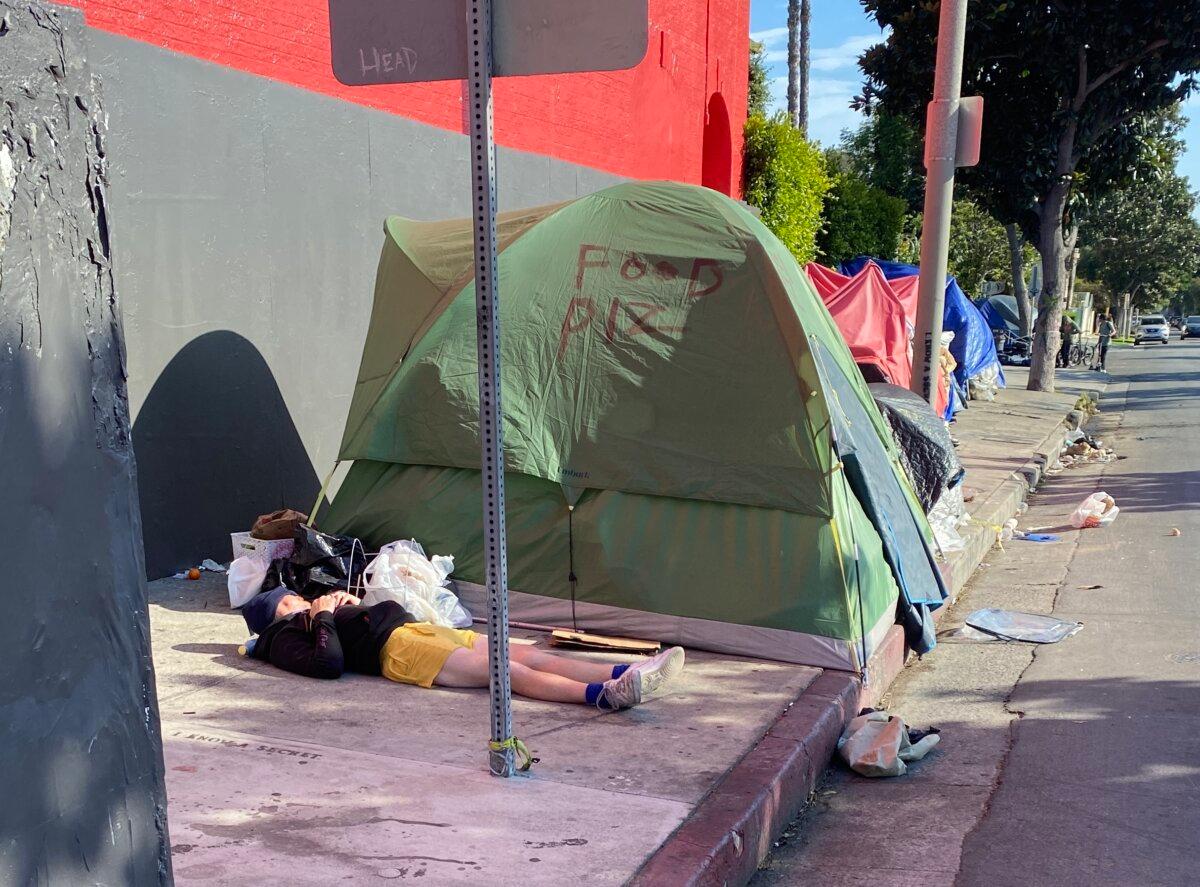
A homeless encampment next to Sunset Sound Studios in Los Angeles. (Courtesy of Keith Johnson)
An encampment outside the iconic Sunset Sound recording studios garnered national attention earlier this year when Taylor Swift said she would no longer record there after being accosted. The building had been set on fire twice by that time, and proprietors said the homeless problem has threatened to put them out of business.
The encampment was cleared and a local organization installed planters, but tents quickly returned.
Los Angeles Police detectives say they regularly arrest people for narcotics sales at encampments throughout Hollywood—including recently at the Sunset Sound encampment and another large one down the street, near Hollywood High School. And because such arrests now typically only result in a citation, dealers frequently return to the same spots and resume dealing, in a “revolving door” scenario.
Mr. Johnson, 69, is soft-spoken and relaxed in the way of a certain generation of Southern Californians.
“I’m nobody. I’m just a neighbor kind of poking my nose around and, you know, sharing information,” he said.
But he spends a lot of time observing and has been building relationships with law enforcement, city officials, and other stakeholders. He regularly chats with detectives, parents, and officials at the Los Angeles Homeless Services Authority (LAHSA).
A few months ago, he said he helped get a migrant family, including 11 children, off the streets by connecting them with the Dream Center, a megachurch in Echo Park that has homeless outreach programs.
LAHSA had dropped the ball, according to Mr. Johnson.
When residents tried for months to move an encampment on Selma Avenue in front of Larchmont Charter School, he was there taking photos and talking to parents.
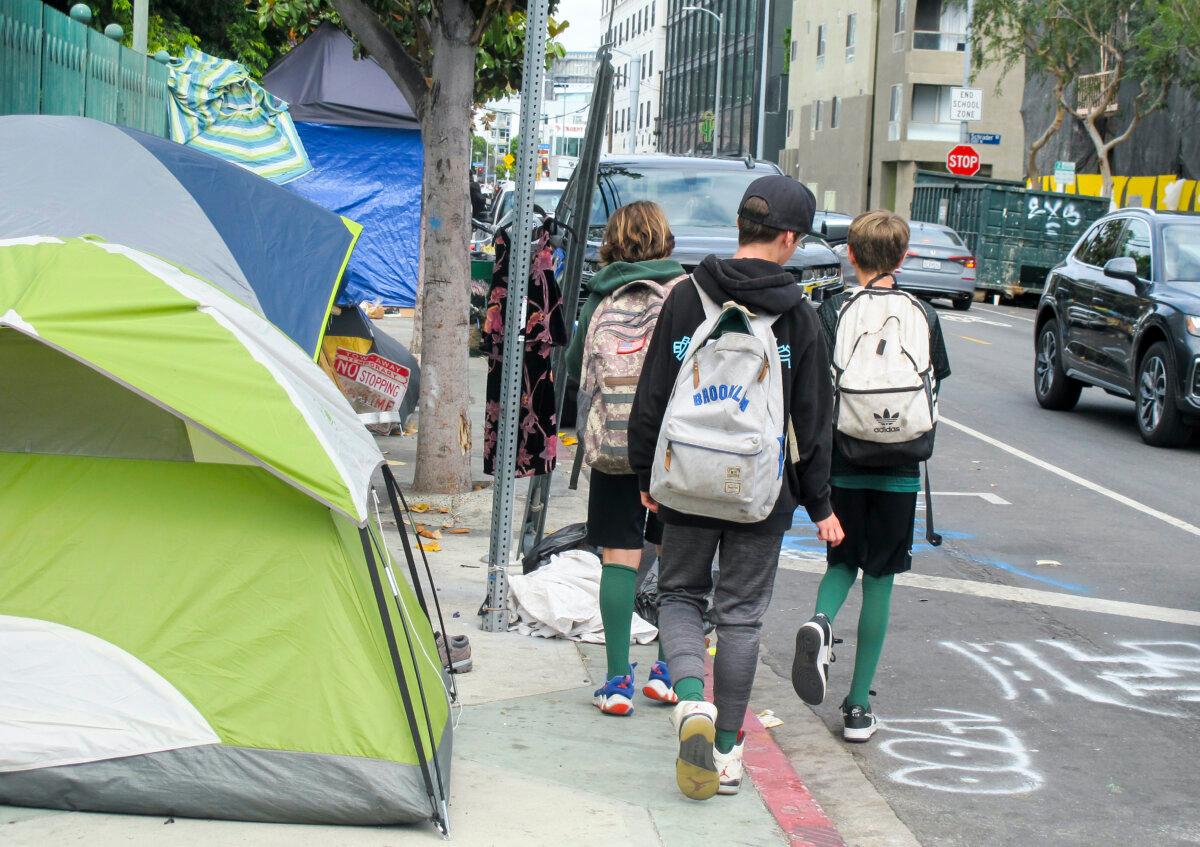
Children walk to Larchmont Charter School in front of a homeless encampment on Selma Avenue. (Courtesy of Keith Johnson)
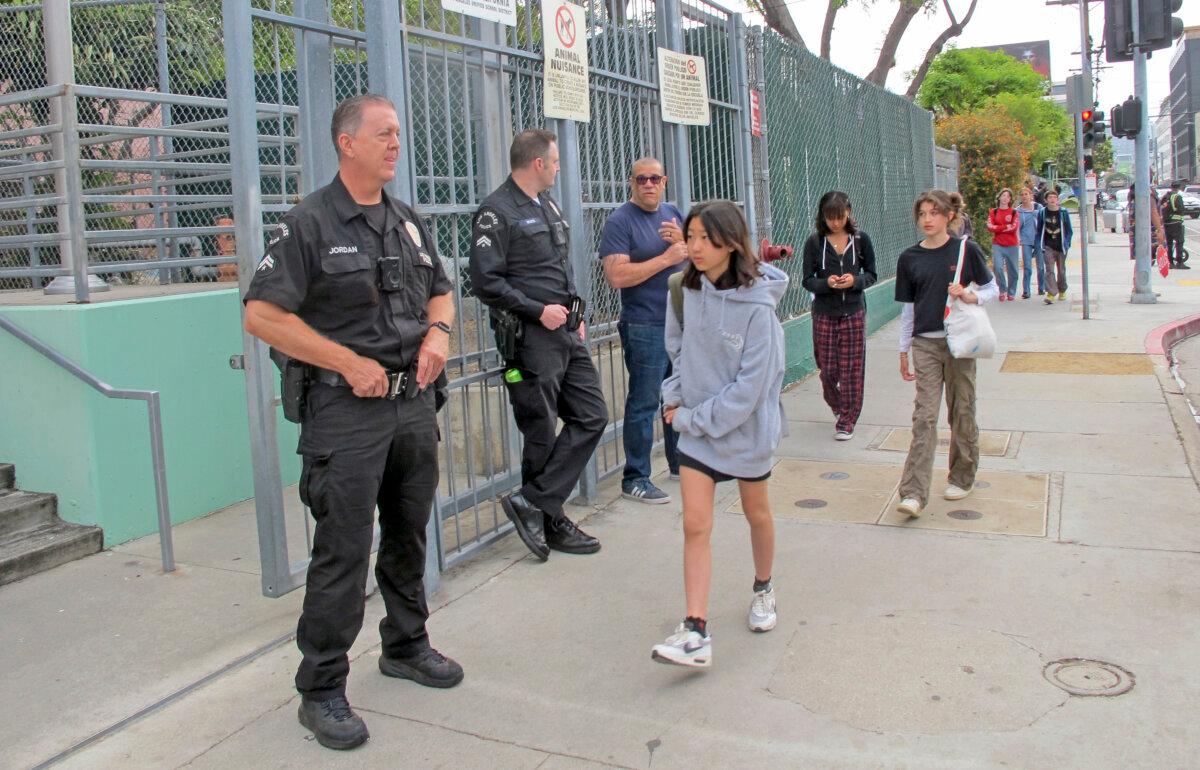
LAPD officers watch children walk to Larchmont Charter School near a homeless encampment. (Courtesy of Keith Johnson)
“This encampment caused such problems that LAPD was there every morning and afternoon for pickup and drop offs after a parent had an encounter with a homeless person and was attacked,” Mr. Johnson said.
When Councilmember Hugo Soto-Martinez, whose 13th District includes much of Hollywood, appeared on his radio show, he pointed to the Inside Safe operation at the location as a success, suggesting that his efforts had kept the encampment from repopulating.
“It’s total [expletive]. He’s not,” Mr. Johnson said. “LAPD is enforcing it.”
Mr. Soto-Martinez is one of several city councilmembers who have declined to enforce a municipal code banning camping near areas such as schools, saying it criminalizes homelessness and doesn’t solve the root problem.
Residents in other parts of the district have told The Epoch Times that their LAPD senior lead officers relayed that they were told to take a “hands-off” approach when Mr. Soto-Martinez took office in 2022.
“We need an interim solution, a place where they can set up their tents, at least, like, provide sanitation and—no, you can’t camp in front of the school, but you can camp over here,” Mr. Johnson suggested. “Who the heck wants to bring their kids to a school that has an encampment nearby where they’re injecting drugs and doing all kinds of crazy stuff?”
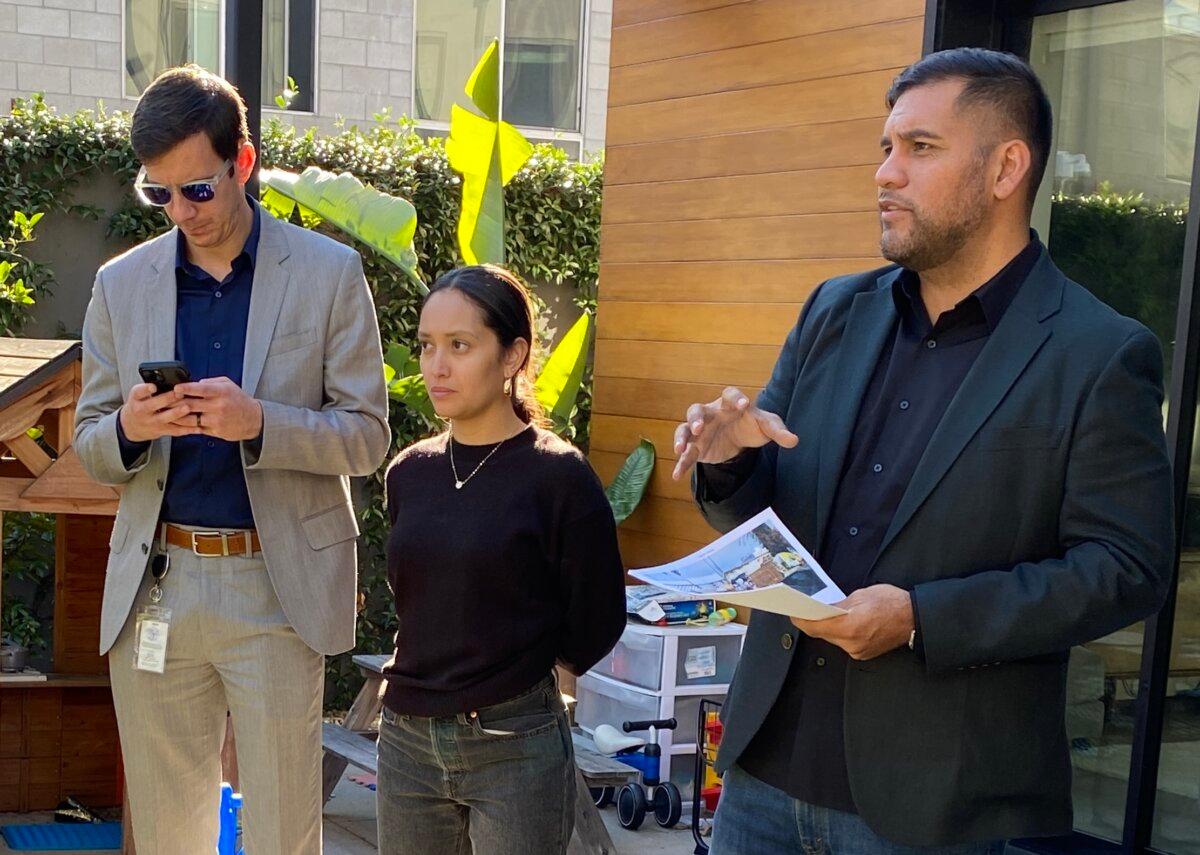
(L-R) Los Angeles Council District 13 Homelessness Director Patrick Mooney, Field Deputy Anais Gonzalez, and Los Angeles City Councilman Hugo Soto-Martinez. (Courtesy of Keith Johnson)
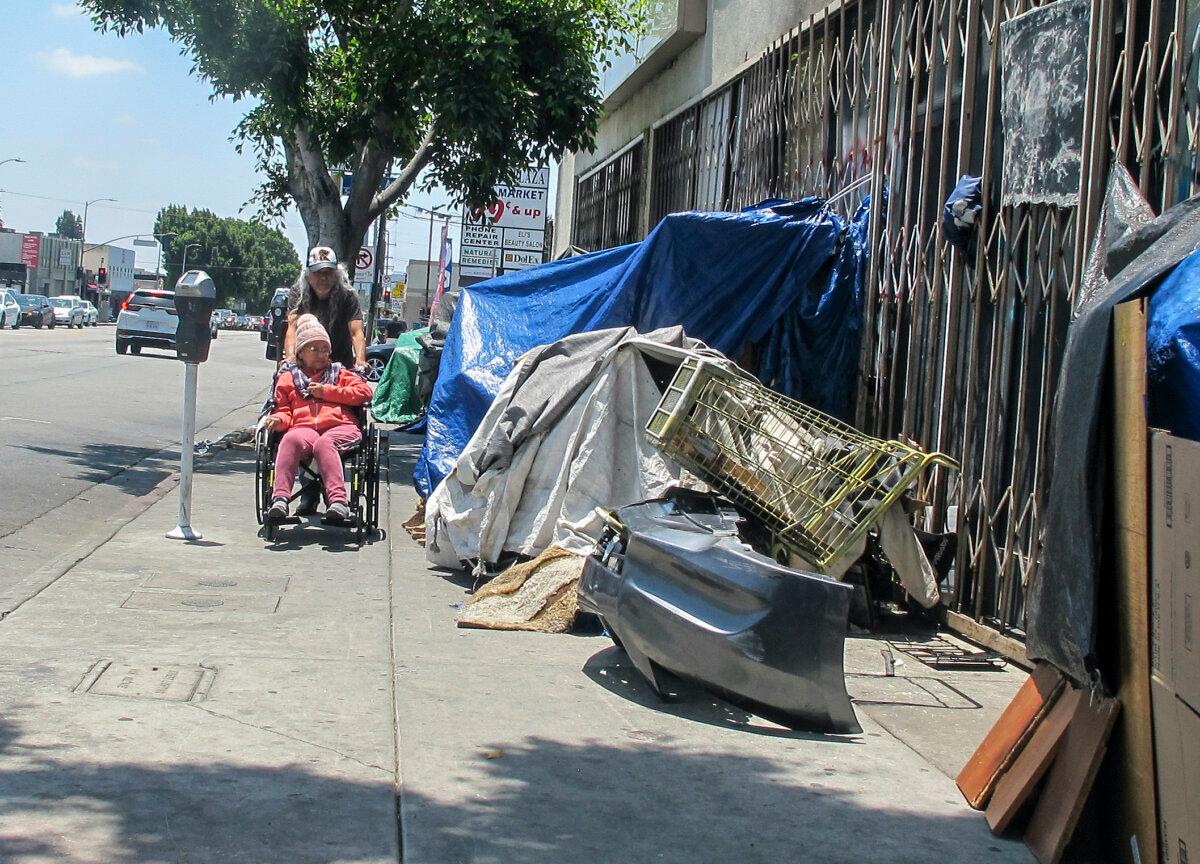
A homeless encampment in Los Angeles. (Courtesy of Keith Johnson)
Clean Streets, for a Price
Residents in more affluent or prominent areas who have more resources, clout, and visibility are alleged to have a better chance of getting the city to respond to their pleas for intervention than those in working-class areas that are routinely ignored.
One potential divide can be seen within the same district.
Residents in a lower-working-class area of Echo Park, also overseen by Mr. Soto-Martinez, told The Epoch Times that they spent nearly a year trying to get the city to clear an encampment that they say had become riven with violence, crime, and gang activity. Even sanitation calls to remove garbage at the site were met with resistance.
“There were piles and piles of garbage on both sides of the street, feces, contaminated syringes,” a resident, who asked not to be identified as she frequently interacts with the district office, told The Epoch Times. “Anytime we’d try to put in an order for L.A. Sanitation to pick up [debris], they’d say you need to call city council, it blocked all of these requests.”
Requests for comment from Mr. Soto-Martinez’s office were not returned on deadline.
Those residents began keeping detailed time logs with photos and videos to submit to the police and the council office.
“We started documenting because we knew they weren’t going to help,” the resident said.
She described her working-class, immigrant neighborhood, where everyone on the block leaves before sunrise to go to work.
“I feel like this whole thing has really traumatized the neighborhood. At certain points, we couldn’t even sleep, just the constant chaos, the craziest things happening right outside the door. I’ve never had so much sleep deprivation,” she said.
A few miles away in central Hollywood, homeowners and business owners have similar complaints.
At a recent town hall, they implored Mr. Soto-Martinez to intervene in what they described as the dissolution of their neighborhood as a result of unchecked crime and homelessness. But because business owners pay supplemental taxes to fund a business improvement district—otherwise known as a BID—they have more leverage.
Their BID, The Hollywood Partnership, spent 1,386 hours cleaning up debris around encampment sites and collected 138 tons of trash in 2023, according to representatives.
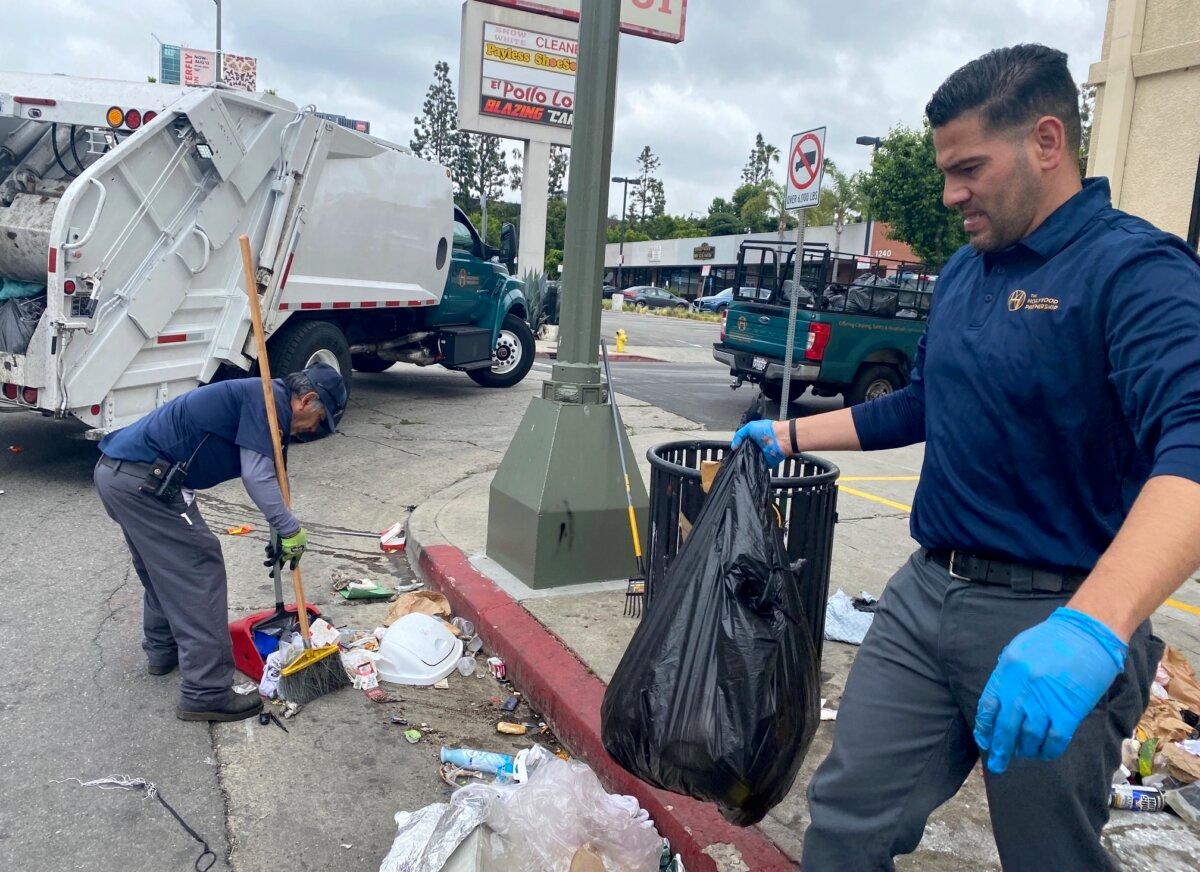
The Hollywood Partnership, a business improvement district team funded by local businesses, cleans up trash on Vine Ave in Los Angeles. (Courtesy of Keith Johnson)
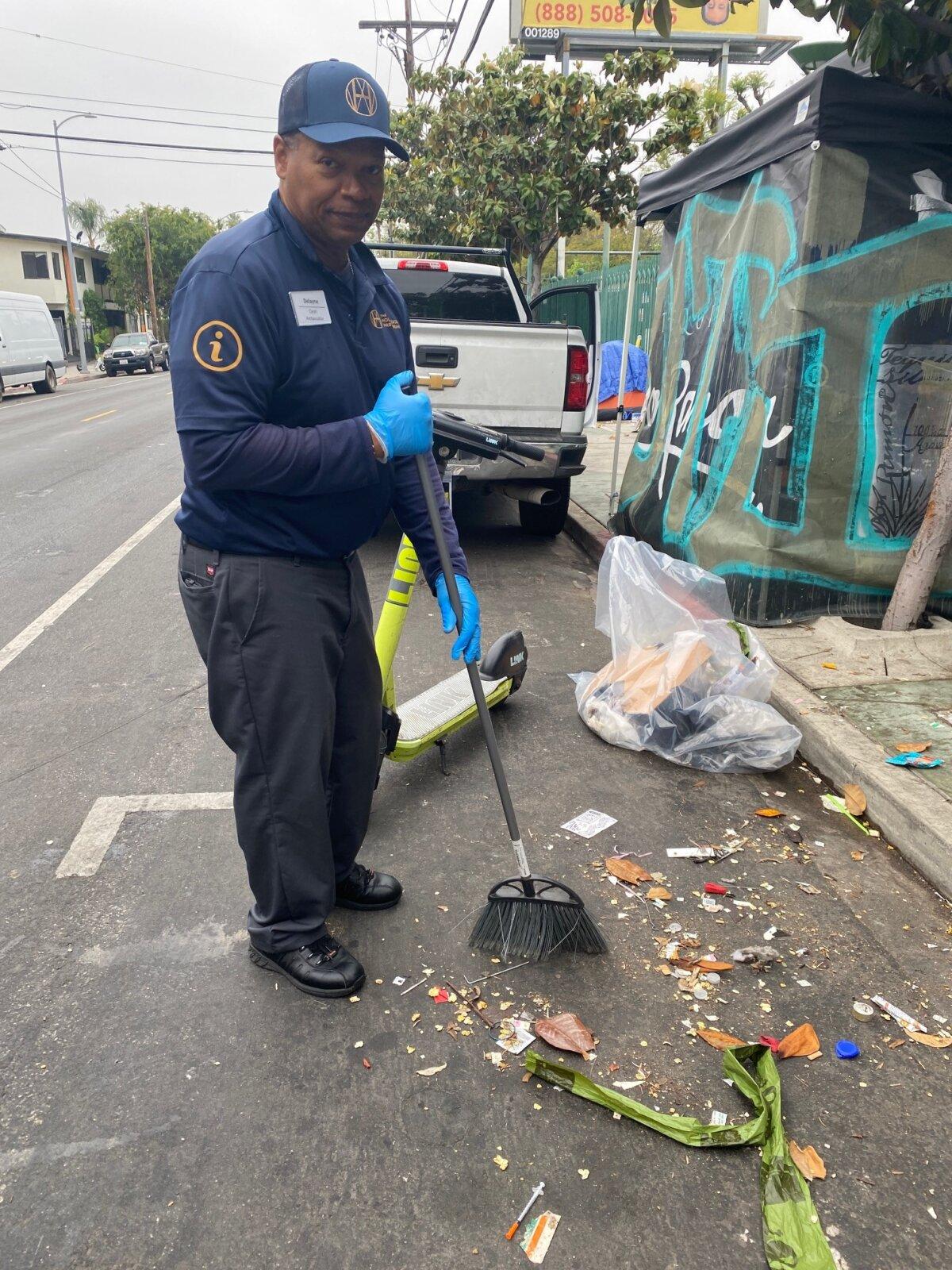
The Hollywood Partnership cleans up trash in Los Angeles. (Courtesy of Keith Johnson)
“If we didn’t do this, it would look terrible,” organization President and CEO Kathleen Strawson said. “That’s demonstrated by areas just beyond our boundaries. ... You can really tell.”
When she realized there were 100 street lights out in her area, she pushed Mr. Soto-Martinez’s office to act after coming up against the Bureau of Street Lighting’s massive repair backlog, caused primarily by copper wire theft and wire hacking from encampments.
The councilmember agreed to allocate $200,000 from the district’s discretionary funds to prioritize the repairs, Ms. Strawson said.
“What a shame he has to do that because it should seem like the city does this in the course of work,” she said.
Ms. Strawson said she has been told that the city agency that fixes street lights is understaffed and that workers have to be paid overtime to make the repairs.
“This is a crisis in L.A., and the Bureau of Lighting can’t keep up,” she said.
‘A Frat Party Basically Every Night’
While residents in areas like Hollywood are clamoring for interim solutions such as temporary shelters with wraparound services to get people off the streets and stabilized, residents in other districts where such shelters have been installed are locked in contentious battles over what they say is gross mismanagement.
For Cameron Flanagan, a SAVE LA member and a Los Feliz resident who in 2003 helped form the Greater Griffith Park Neighborhood Council—now called the Los Feliz Neighborhood Council—the past several years have amounted to a kind of standoff with the office of Fourth District Councilwoman Nithya Raman, primarily over a temporary shelter in Los Feliz that critics say is doing more harm than good.
According to an analysis of LAHSA data in a report Ms. Flanagan co-authored with other community members who are now part of SAVE LA, homelessness increased in the area around the shelter at almost four times the rate of that in Los Feliz—468 percent, compared to 126 percent, respectively—the claim being that the shelter “attracts more homelessness than it aids or abates.”
The report also cites crime increasing in 2023 around the shelter at 300 percent of the rate of the general area.
Ms. Flanagan said she helped the Los Angeles Police Department identify several gang-affiliated drug dealers who dealt meth around the corner from the shelter and pointed to another drug dealer who had been living under a nearby bridge, a block away, for 18 months.
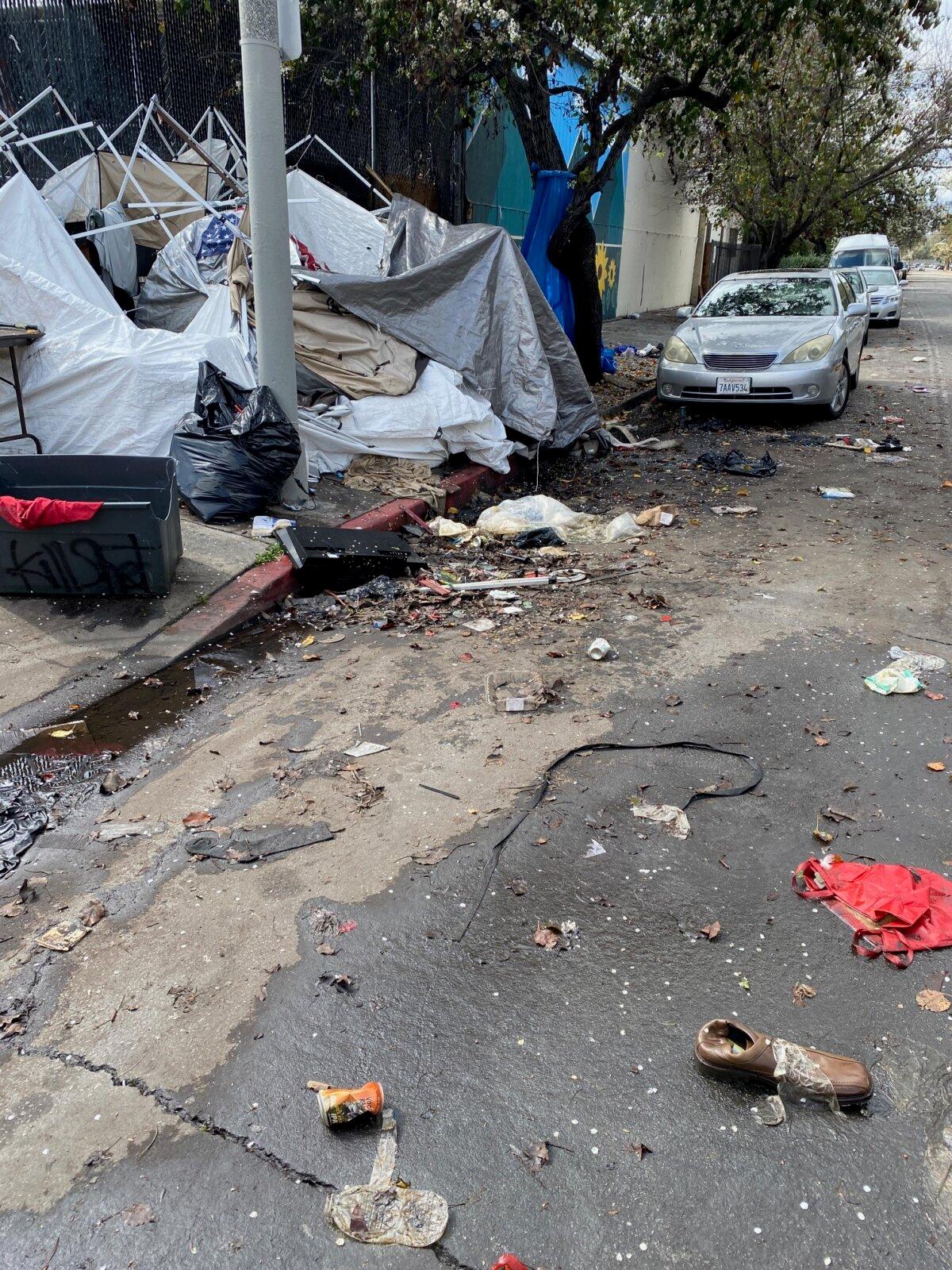
A homeless encampment on Harold Way and Western Ave in Hollywood. (Courtesy of Keith Johnson)
When that person was eventually housed, neighbors paid to clean the area, install mulch, and plant flowers.
Ms. Flanagan alleges that Ms. Raman refuses to distinguish between criminal gang activity and homelessness and that People Assisting the Homeless (PATH), the organization managing the site, allows encampments and large debris and trash to pile up in the immediate vicinity.
The councilwoman’s refusal to support cleanups, either through 41.18 or other ordinances, they allege, enables a market for drugs and gangs to flourish near the shelter.
Ms. Flanagan said she and other residents paid $600 to make new signs that would allow the police to enforce anti-camping bans after Ms. Raman had the previous ones removed.
Requests for comment from Ms. Raman’s office were not returned, nor were inquiries to PATH representatives.
Ms. Flanagan, who spent 23 years as a clinical psychologist, volunteered at the Bridge Home shelter in Los Feliz for more than a year, until, she said, a man staying there assaulted her.
“You have people who are psychotic, on drugs, and you have vets in there,” she said. “It’s very much similar to the lockdown psychiatric facility I worked at back East.
“[Except] I don’t have Thorazine shots, Plexiglass, or security guards on the outside of the facility. So even with all my experience, things happen. It’s dangerous down there.”
The shelter is near the southern entrance to Griffith Park and across the street from a recreational complex, which includes a senior center and a nursery school.
Residents objecting to interim shelters in their neighborhoods are often seen as NIMBYism, a stubborn obstacle that frustrates practical efforts to tackle the homeless crisis.
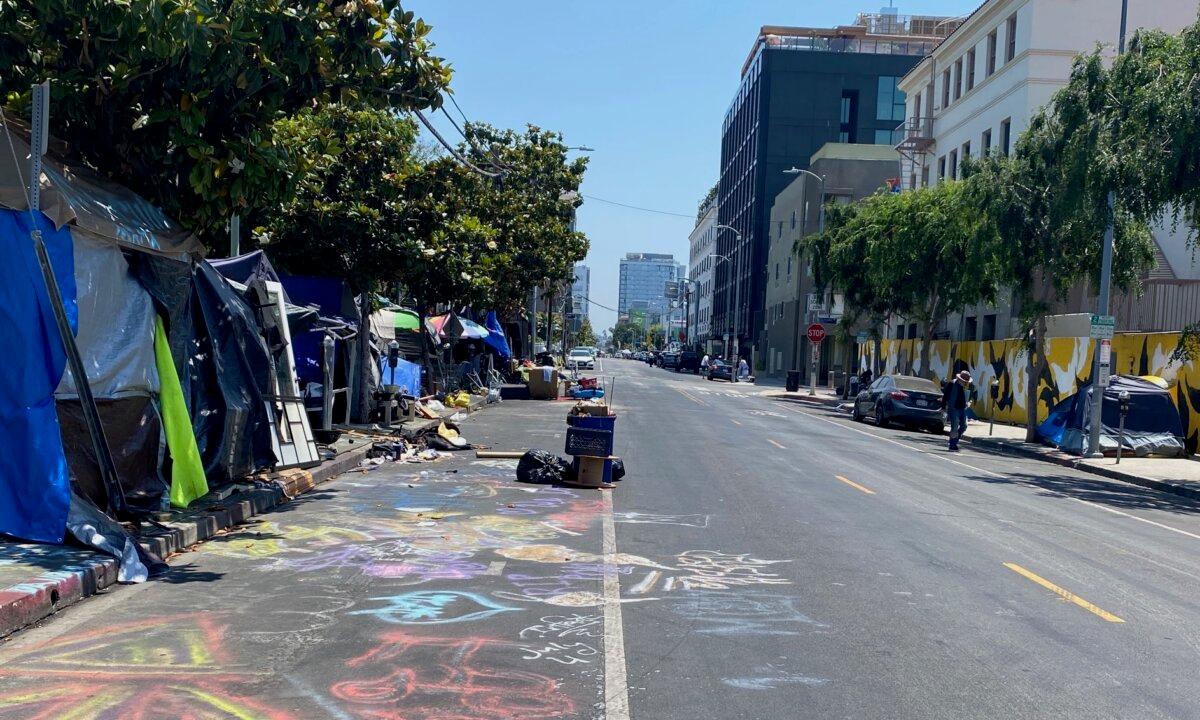
A homeless encampment near Larchmont Charter School in Los Angeles. (Courtesy of Keith Johnson)
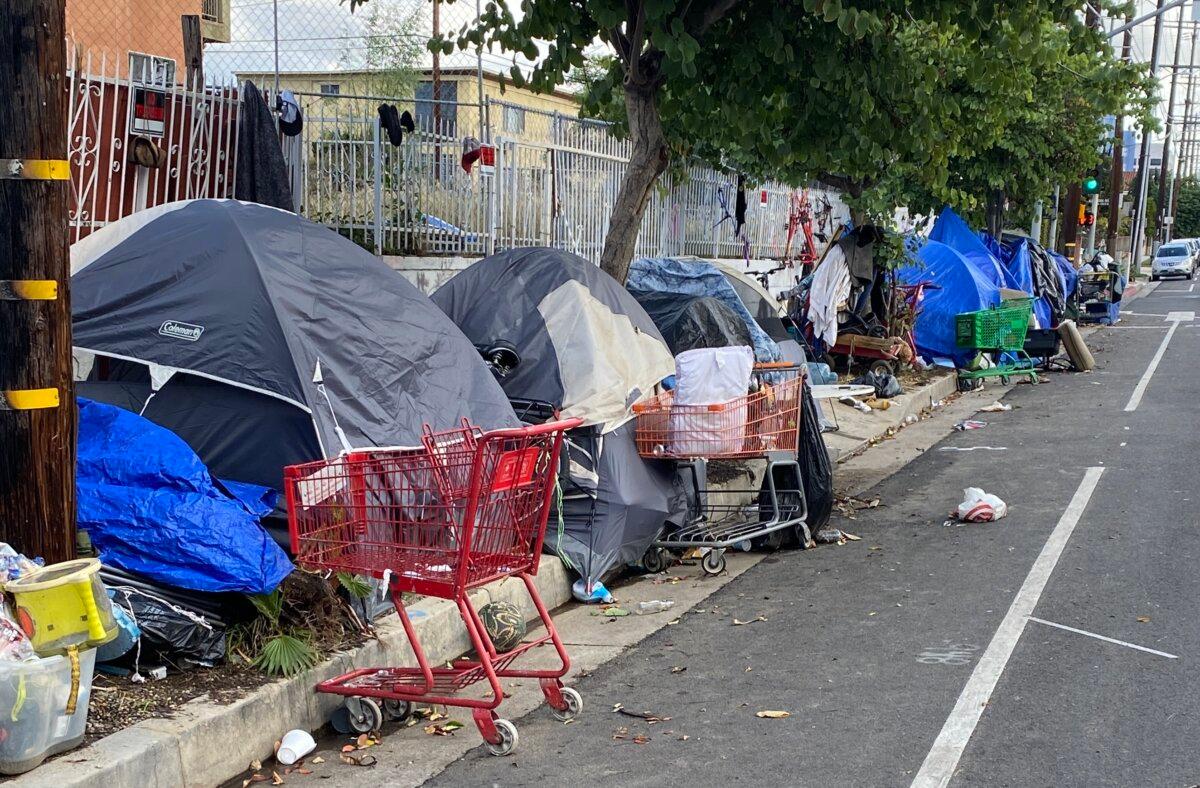
A homeless encampment near a pre-school on Fountain Avenue and Alexandria in Los Angeles. (Courtesy of Keith Johnson)
But Ms. Flanagan said the community supported the $5.6 million shelter under former Councilmember David Ryu’s tenure, on the grounds that it had defined goals and would only be open for three years, which has now been extended without a proposed end date.
While the large tent-like structure is an “emergency” shelter meant to house people for up to 90 days, some residents have been there since it opened in 2020. And the “exterior security” promised under the former councilmember was eliminated by Ms. Raman.
Overdoses are common, Ms. Flanagan claimed, pointing to one person staying at the shelter who flatlined a few months ago.
“I had to use four Narcan to revive her,” she said.
A family shelter down the road doesn’t share the same issues as A Bridge Home, according to Ms. Flanagan.
“I think a lot of it has to do with the fact that you’ve got males and females who are drug-addicted [at the Bridge Home shelter] that make it into a frat party basically every night they can,” she said. “And they don’t get housed.”
Introduced by former Mayor Eric Garcetti in 2018, the Bridge Home shelter program, which includes the one in Los Feliz near the recreation center, was designed to house people for three to six months before transitioning to permanent housing.
But according to the latest data available from LAHSA, only about 19 percent of people from the Los Feliz shelter have exited to permanent housing.
LAHSA has been paid more than $2.2 million each fiscal year in city and state funds to operate the Los Feliz shelter through 2023, according to documents provided by the agency in response to a California Public Records Act request.
Its online dashboard, last updated on Feb. 29, shows 98 beds out of 100 are occupied at the Los Feliz shelter. Ms Flanagan claims that the number has consistently been closer to 50 percent, and on a recent visit, an employee told The Epoch Times there were “70 to 80” occupants.
